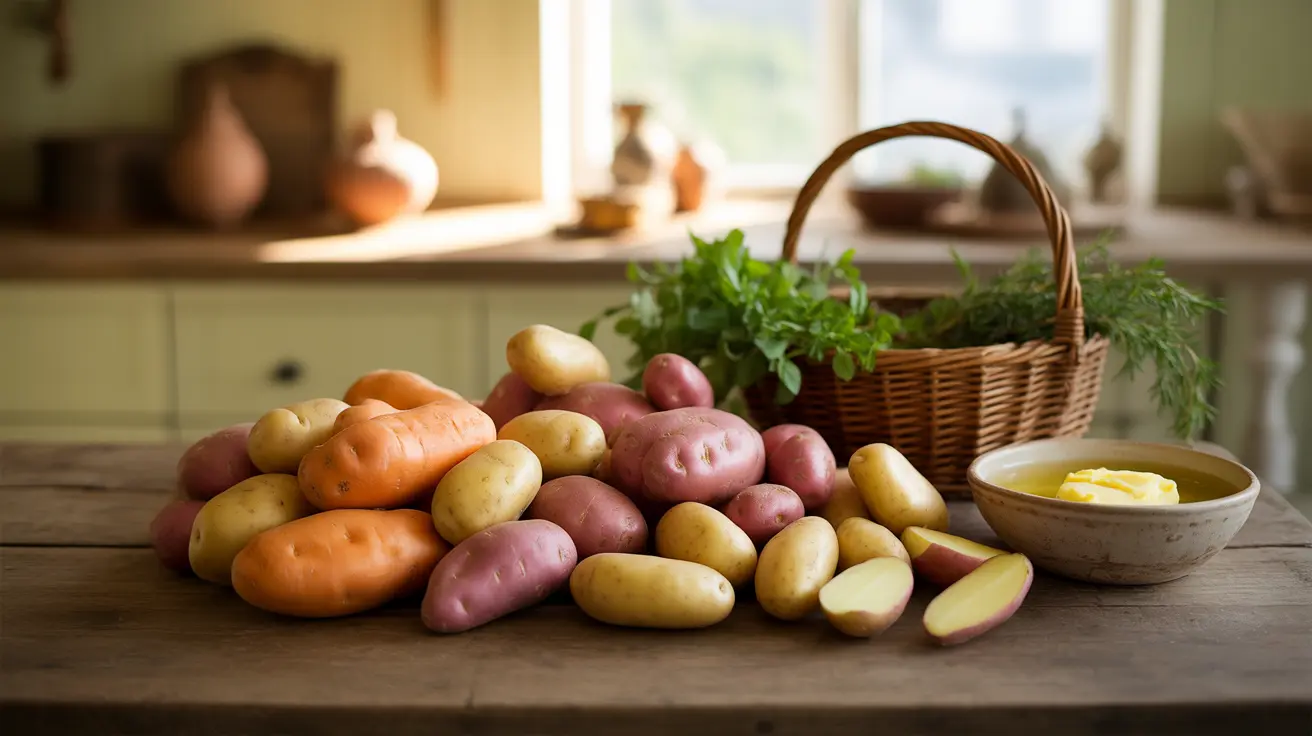For people with diabetes, managing carbohydrate intake is crucial for maintaining stable blood sugar levels. Potatoes, a staple food in many diets, can present a particular challenge due to their carbohydrate content and potential impact on blood glucose. Understanding how to incorporate potatoes into a diabetic diet safely and effectively is essential for both health and enjoyment of food.
This comprehensive guide explores the relationship between potatoes and diabetes, offering practical advice on potato selection, preparation methods, and portion control to help people with diabetes make informed dietary choices.
Understanding Potatoes and Blood Sugar Impact
Potatoes contain complex carbohydrates that break down into glucose during digestion. For people with diabetes, this process can significantly affect blood sugar levels. The glycemic index (GI) of potatoes varies depending on the variety and cooking method, with some types causing more rapid blood sugar spikes than others.
The Role of Glycemic Index
Different potato varieties have varying glycemic index ratings:
- Waxy potatoes (like fingerling and red potatoes): Lower GI
- Russet potatoes: Higher GI
- New potatoes: Moderate GI
The lower the GI, the more gradual the impact on blood sugar levels.
Choosing Diabetes-Friendly Potato Varieties
When selecting potatoes, opt for varieties that have a lower glycemic index:
- Sweet potatoes
- Red potatoes
- Purple potatoes
- Fingerling potatoes
These varieties generally contain more fiber and nutrients while having less impact on blood sugar levels.
Smart Preparation Methods
The way potatoes are prepared can significantly affect their impact on blood sugar:
- Boiling: Preferred method, resulting in lower GI
- Steaming: Maintains nutrients while keeping GI moderate
- Roasting: Better than frying, especially with skin on
- Cooling: Creates resistant starch, which helps lower the glycemic impact
Tips for Healthier Potato Dishes
Consider these preparation strategies:
- Leave the skin on for extra fiber
- Combine with protein and healthy fats
- Practice portion control
- Add non-starchy vegetables to meals
- Allow potatoes to cool before eating when possible
Portion Control and Meal Planning
For people with diabetes, portion size is crucial when eating potatoes. A recommended serving is about 1/2 to 1 cup of cooked potatoes, depending on individual carbohydrate needs and blood sugar management goals. Always monitor blood glucose levels after introducing potatoes to understand your personal response.
Potential Risks and Considerations
While potatoes can be part of a healthy diet for people with diabetes, there are some risks to consider:
- Blood sugar spikes from large portions
- Weight gain from high-calorie preparations
- Increased insulin requirements
- Potential cardiovascular impacts from fried preparations
Frequently Asked Questions
How do potatoes affect blood sugar levels in people with diabetes? Potatoes can cause blood sugar levels to rise because they contain complex carbohydrates that break down into glucose. The impact varies based on potato type, preparation method, and portion size.
Which types of potatoes have a lower glycemic index and are safer for diabetics? Sweet potatoes, red potatoes, and fingerling potatoes typically have a lower glycemic index, making them better choices for people with diabetes. These varieties tend to cause a more gradual rise in blood sugar levels.
What are the best ways to prepare potatoes to reduce their impact on blood sugar? Boiling, steaming, and cooling potatoes before eating can help reduce their glycemic impact. Adding healthy fats and protein to potato dishes, and keeping portions moderate, can also help manage blood sugar responses.
Can people with diabetes include potatoes in their diet without raising their blood sugar too much? Yes, people with diabetes can include potatoes in their diet by choosing appropriate varieties, using healthy cooking methods, practicing portion control, and monitoring their blood sugar response.
What are the health risks of eating large portions of high-carb potato dishes for diabetics? Large portions of high-carb potato dishes can lead to significant blood sugar spikes, increased insulin requirements, potential weight gain, and complications in diabetes management. Portion control and proper preparation methods are essential.




